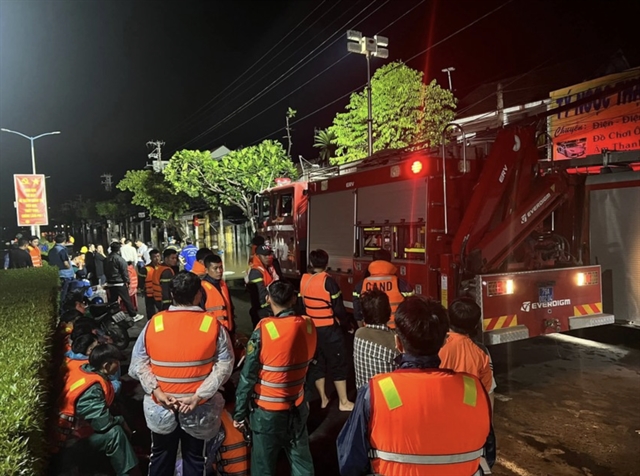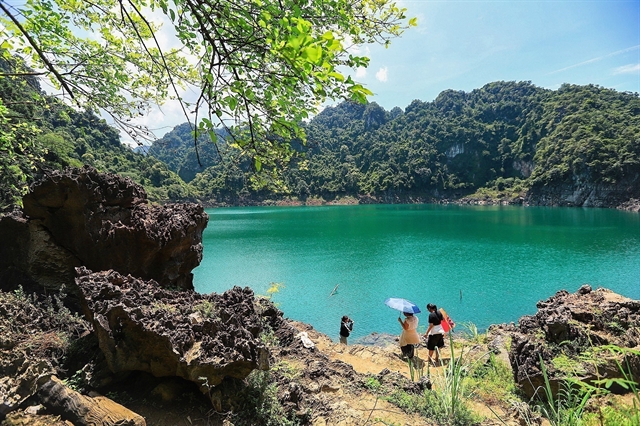 Society
Society

 |
| Phú Mỹ Commune in Kiên Giang Province’s Giang Thành District has been recognised as a new-style rural commune. — VNA/VNS Photo Hồng Đạt |
KIÊN GIANG — The Cửu Long (Mekong) Delta province of Kiên Giang plans to add at least three new-style rural communes and 14 advanced new-style rural communes this year.
It plans to invest VNĐ9.2 trillion (US$390 million) raised from various sources for the purpose.
It already has 107 of its 116 communes recognised as new-style under the eponymous national programme.
To new-style status, a commune must meet the programme’s 19 criteria related to infrastructure, irrigation, electricity, environment, income, education, healthcare, social security and culture.
For advanced new-style, they must meet higher standards across all criteria.
The programme has helped improve the appearance of rural areas, value of agricultural production and lives of rural people, according to the province Department of Agriculture and Rural Development.
Kiên Lương District’s Bình Trị Commune, which used to be economically disadvantaged, was recognised as a new-style rural commune last year.
Roads there are now paved with cement or asphalt, and power and water supply are universally available.
The commune has developed many effective models such as industrial shrimp farming, shrimp-rice farming and breeding of aquatic species in mangrove forests.
This has helped hundreds of households escape poverty, according to the commune People’s Committee.
Châu Thái Bình, deputy secretary of the Bình Trị Commune Party Committee and chairman of its People’s Committee, said: “To meet the criteria of new-style rural areas, the [administration] has organised numerous advocacy activities to enhance the public’s awareness of the purpose and meaning of the programme and encourage them to participate.”
The commune had mobilised resources from various sources to invest in rural infrastructure, he said.
Nguyễn Văn Mách, a local resident, said: “The programme has made Bình Trị Commune more beautiful and cleaner.
“Seeing the change, I feel proud and hope to continue to contribute to the programme.”
To further improve the lives of its people, Bình Trị said it targeted recognition as an advanced new-style rural commune.
To achieve that, the province had built infrastructure including road and irrigation facilities.
Lê Hữu Toàn, deputy director of the agriculture department, said the province had built new-style rural areas together with restructuring agriculture and developing the rural economy, small industry and services, and developed agriculture towards circular economy and eco-farming.
It had developed rural occupations and tourism, improved the efficiency of co-operatives and developed products under the “One Commune-One Product” programme, and these had helped reduce poverty and improve lives in rural areas, he said.
They had also boosted agricultural production significantly, he added.
The province has increased the use of advanced farming techniques, new seed varieties and high-quality farming methods such as Vietnamese and global good agricultural practices.
Kiên Giang, the country’s largest rice producing province, has established large-scale areas for farming rice and shrimp using the intensive method.
It has developed semi-industrial and industrial shrimp breeding areas in the Long Xuyên Quadrangle and shrimp-rice farming areas in the U Minh Thượng region.
Besides shrimp and rice, the province has also developed concentrated farming areas for other agricultural products such as pepper in Gò Quao and Giồng Riềng districts and Hà Tiên and Phú Quốc cities, and pineapple areas in Châu Thành, Gò Quao and Vĩnh Thuận districts.
It has developed efficient concentrated farming areas, mechanized farming and improved processing and preservation of agricultural products through value chains, according to the department.
It plans to invest more in rural infrastructure, expand agricultural distribution and develop craft villages and rural tourism. — VNS




